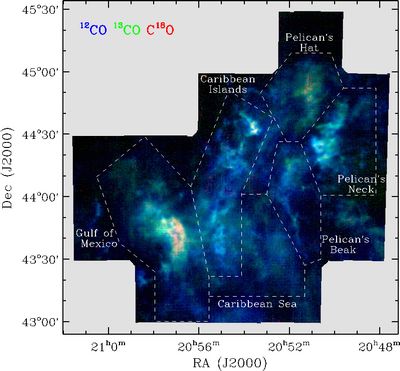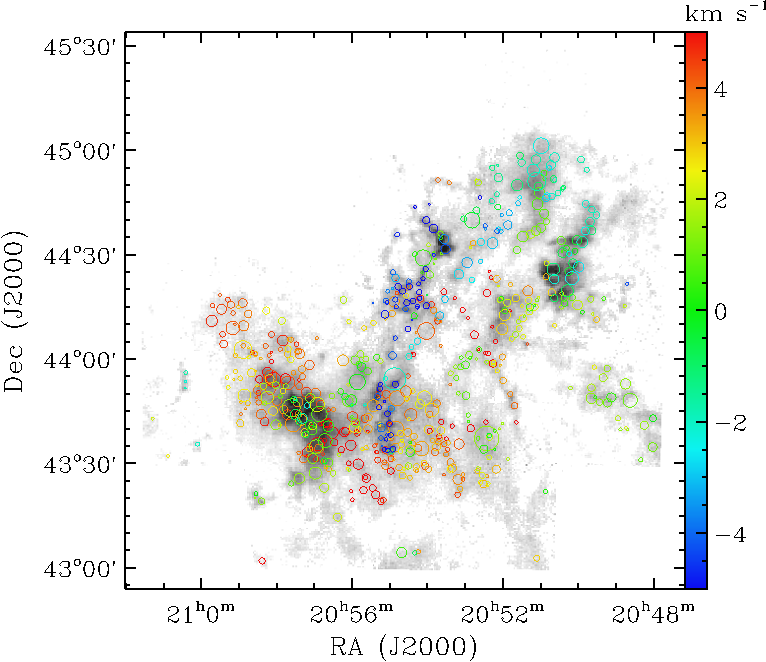By means of mapping observation with Delingha 13.7 m telescope in three CO isotopes, researchers at the Purple mountain observatory observe the North American and Pelican Nebulae to study the properties of large scale cold molecular cloud. Three CO isotopes present different spatial distributions and velocity features: 12CO is bright and extended, associating with dust extinction; 13CO is compact; C18O is only detected within a few dense clumps. The kinetic structures of the cloud confirm an expanding shell surrounding the ionized gas produced by the W80 HII region. Warm gas (>20 K) is found to outline the edge of the HII region, while cold gas spreads across the whole cloud. According to the spatial distributions, six discernable regions are found in the cloud with different physical properties indicating their different evolutionary stages.
We search for clump structures within the cold cloud and 611 valid clumps are identified. The properties of these clumps are similar to the cold clumps in early phase of star formation. Most clumps are gravitationally bound. Young stellar objects have already formed in some clumps.
The work by Shaobo Zhang, Ji Yang, and Ye Xu has been published on the Astronomical Journal available at http://adsabs.harvard.edu/abs/2014AJ....147...46Z

By with for ZHANG Shaobo
Figure 1. Composite color image of the North American and Pelican Nebulae complex made from the integrated intensity map, with 12CO in blue, 13CO in green, and C18O in red, respectively.

By with for ZHANG Shaobo
Figure 2. Clumps identified in the complex. The circles indicate the clump positions on the integrated intensity map of 13CO. The colors of the circles represent the velocities the clumps, while the circles are scaled according to the sizes of clumps.
(Information Source: Purple Mountain Observatory, CAS)

